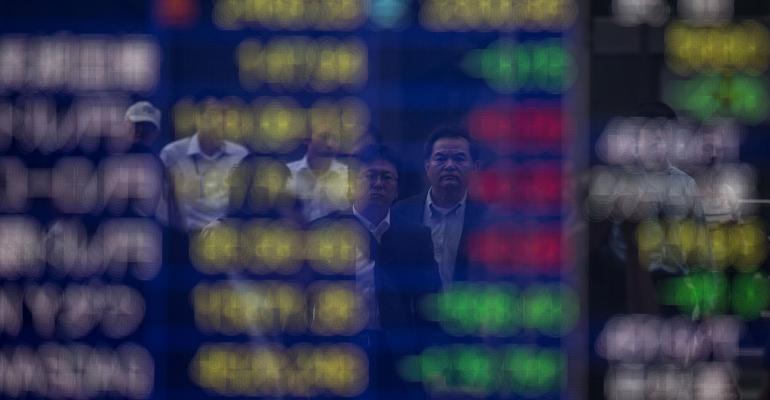By Kathryn Koch and Xiangrong Jin
The MSCI Emerging Markets Index is down 4% and has underperformed the S&P 500 Index by over 7% since Republicans swept US elections. Investors have pulled $5bn1 from EM equities, or 25% of YTD inflows, marking the largest week of industry outflows in the last 5 years2. We believe these events offer an attractive entry point for long-term investors and encourage them to build a strategic exposure as our long-term case for owning EM equities remains intact.
What is the Market Worried About?
Market concern #1: Rising US interest rates mean higher funding costs of debt, which could pressure EM economies overall.
Our View: EM countries are better positioned today than in the past to withstand increasing funding costs of debt as a result of improved external imbalances and a more stable debt profile. In 2000, the vast majority of debt issued by EM countries was in US dollars. Today, over two-thirds of all EM sovereign debt is in local currency, making debt servicing more sustainable3.
In addition, EM earnings and equities have previously done well in times when the Federal Reserve has increased rates due to US economic growth. Since the inception of the MSCI EM index in 1988, EM equities have outperformed the S&P 500 index in 3 of the 4 major Fed rate hike cycles. As such, if rising US rates are a result of an improving growth backdrop, then EM may potentially continue to perform well.
Market concern #2: A strong US dollar could detract from EM equity total returns for investors when converted back to USD.
Our View: The primary driver of EM equity returns has historically been earnings growth, not foreign exchange. Over the past ten years ending November 2016, EM returns have come almost exclusively from earnings and dividends. We see encouraging signs that EM earnings and return on equity (ROE) are continuing to recover from cyclical lows and expect this to be the major driver of the asset class, offsetting any potential currency headwinds.
In addition, the US dollar is already relatively strong versus EM currencies, suggesting less room for further US dollar appreciation. Following almost 9 years of depreciation, EM FX4 is currently trading at a discount of 15% relative to fair value5.
Market concern #3: US President-elect Trump has suggested he will increase protectionism, which would negatively impact EM economies that are exporting to the US.
Our View: We believe there could be a difference between campaign rhetoric around protectionism and actual implementation as policy makers may be constrained by economic realities such as negative consequences to US economic growth.
Moreover for EM equities, US exports account for less than 10% of overall revenues6. Even economies presumed to be more vulnerable to Trump protectionist policies (such as Mexico and China), we continue to find many attractive domestically-oriented growth potential opportunities.
Outlook and Opportunity
- Fundamentals are recovering: Historically, EM equity performance has been closely tied to EM earnings and return on equity (ROE). We see encouraging signs of improving Purchasing Managers’ Index (PMI) across the major EM regions and believe EM earnings and ROE will continue to pick up from cyclical lows. This should be further supported by better US growth, stabilized commodity prices and continuation of domestic structural reform.
- Valuations are attractive: EM trades at a 29% discount to US equities7 and is in the bottom decile relative to its long-term history on a cyclically-adjusted price-to-earnings basis, which is particularly compelling given potential for EM earnings turnaround. In our view, the correction in EM equities creates an attractive potential opportunity for long-term investors to rebuild their EM equity exposure.
- Selectivity is critical: We believe that the dispersion of stock-level returns will be amplified due to many cross currents in this environment. There may be challenges but also many areas of potential opportunity. We believe maintaining a balanced portfolio and focusing on stock selection, rather than timing the market, can serve investors well, especially during periods of volatility.
End Notes
1 Measured between 9-Nov-2016 thru 16-Nov-2016.
2 Source: The Institute of International Finance.
3 J.P.Morgan, as of Oct-16. Taken for total market cap of JPM GBI-EM Broad Index (local currency) and JPM EMBI Global Index (USD denominated).
4 Source: GSAM, as of Nov-16. Calculated using an equal-weighted EM FX basket.
5 Source: GSAM, as of Nov-16. Fair value model calculated using Purchasing Power Parity (PPP), inflation differentials and productivity adjustments.
Emerging markets securities may be less liquid and more volatile and are subject to a number of additional risks, including but not limited to currency fluctuations and political instability. Past performance does not guarantee future results, which may vary.
6 Source: FactSet GeoRev, MSCI, as of 31-Oct-16. Shown for MSCI EM Index.
7 Source: FactSet, as of 25-Nov-2016. Valuation calculated using consensus 12m forward Price-to-Earnings (P/E) Ratio.
Kathryn Koch is global head of client portfolio management and business strategy for Goldman Sachs Asset Management Fundamental Equity. Jin Xiangrong, Ph.D. is a Managing Director, Fundamental Equity Client Portfolio Management at Goldman Sachs Asset Management – New York.





